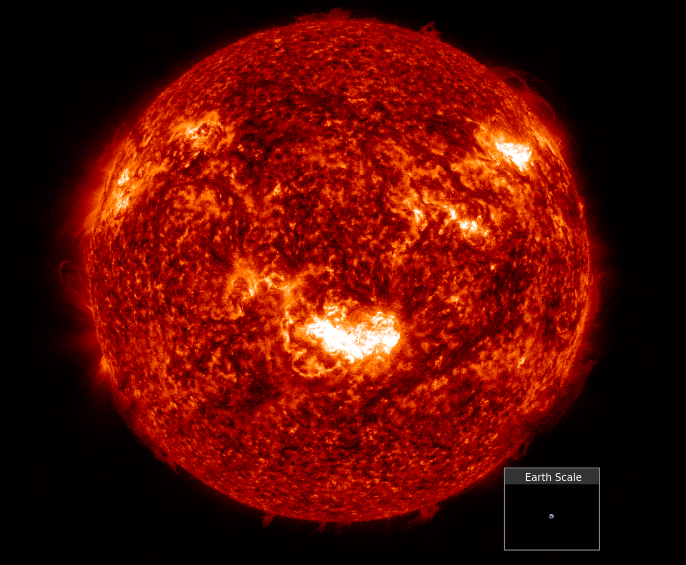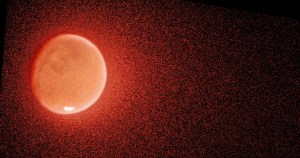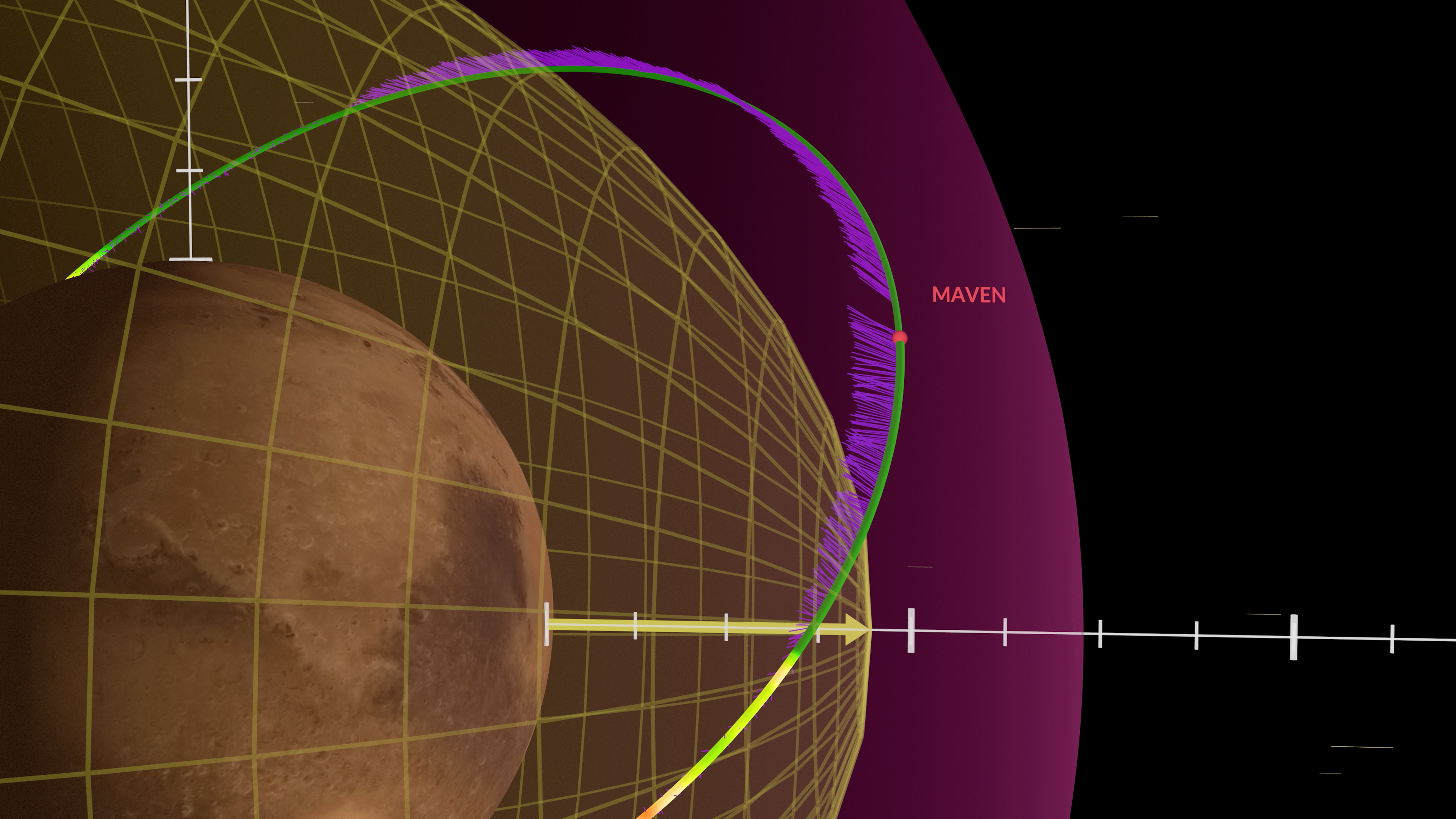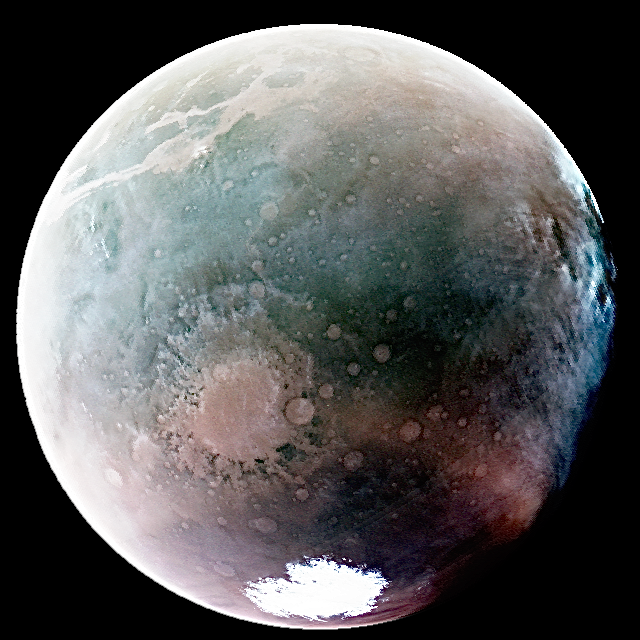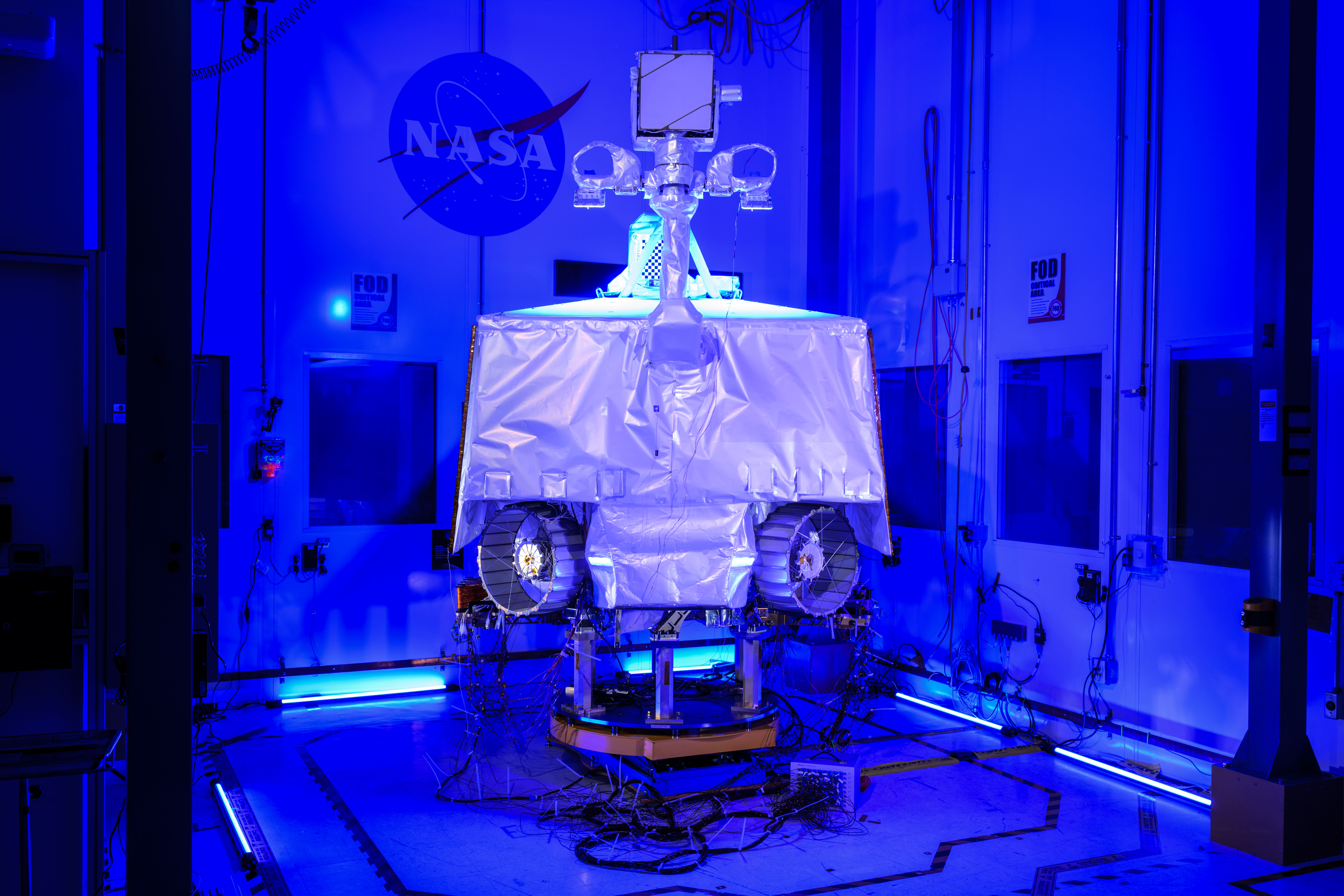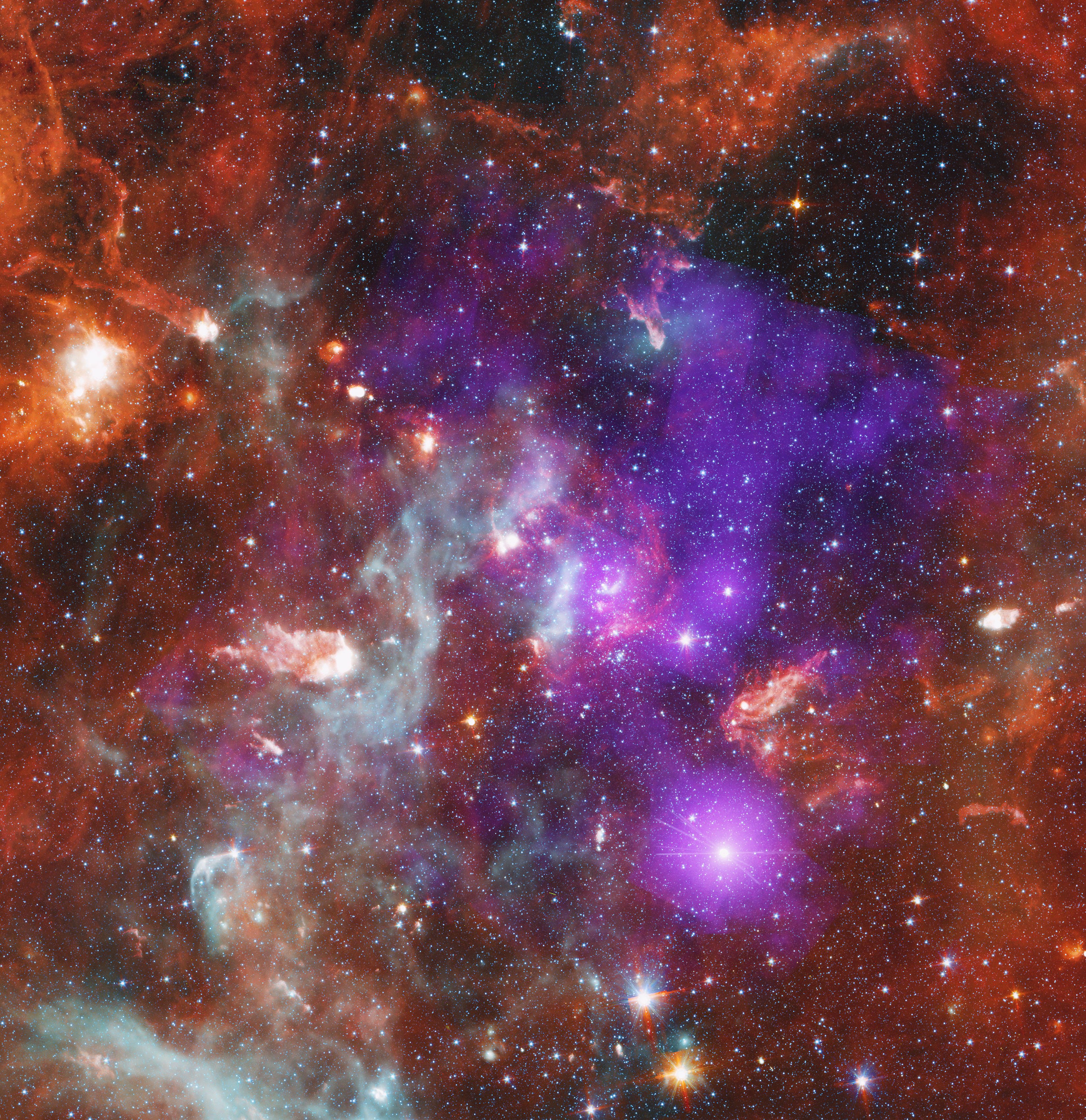Celebrating 10 Years at Mars with NASA’s MAVEN Mission
A decade ago, on Sept. 21, 2014, NASA’s MAVEN (Mars Atmospheric and Volatile EvolutioN) spacecraft entered orbit around Mars, beginning its ongoing exploration of the Red Planet’s upper atmosphere. The mission has produced a wealth of data about how Mars’ atmosphere responds to the Sun and solar wind, and how these interactions can explain the […]
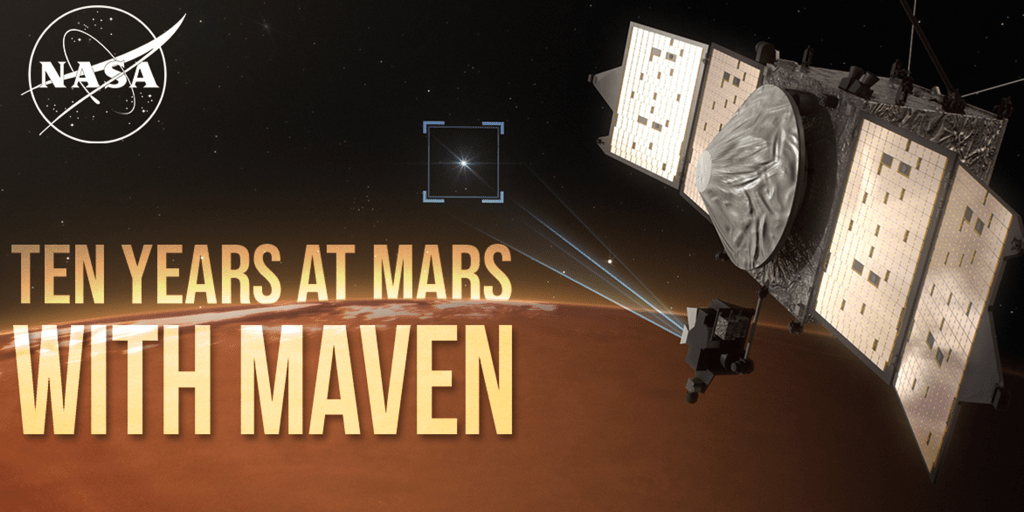
A decade ago, on Sept. 21, 2014, NASA’s MAVEN (Mars Atmospheric and Volatile EvolutioN) spacecraft entered orbit around Mars, beginning its ongoing exploration of the Red Planet’s upper atmosphere. The mission has produced a wealth of data about how Mars’ atmosphere responds to the Sun and solar wind, and how these interactions can explain the loss of the Martian atmosphere to space.
Download this video in high-resolution from NASA’s Scientific Visualization Studio: https://svs.gsfc.nasa.gov/14690/
Credit: NASA’s Goddard Space Flight Center/Dan Gallagher
Today, MAVEN continues to make exciting new discoveries about the Red Planet that increase our understanding of how atmospheric evolution affected Mars’ climate and the previous presence of liquid water on its surface, potentially determining its prior habitability.
“It is an incredibly exciting time for the MAVEN team as we celebrate 10 years of Martian science and see the tremendous impact this mission has had on the field,” said Shannon Curry, the principal investigator of MAVEN and a researcher at the Laboratory for Atmospheric and Space Physics at the University of Colorado Boulder. “We also look forward to the future discoveries MAVEN will bring.”
In celebration of this mission milestone, we recap some of the most significant scientific results of this unique and long-lasting Mars aeronomy mission.
- Extreme atmospheric erosion
One of MAVEN’s first big results was discovering that the erosion of Mars’ atmosphere increases significantly during solar storms. The team studied how the solar wind — a stream of charged particles continually streaming from the Sun — and solar storms continually strip away Mars’ atmosphere, and how this process played a key role in altering the Martian climate from a potentially habitable planet to today’s cold, arid planet. - Sputtering to space
To better understand how Mars lost much of its atmosphere, MAVEN measured isotopes of argon gas in the upper Martian atmosphere. Argon is a noble gas, meaning it rarely reacts with other constituents in the Martian atmosphere. The only way it can be removed is by atmospheric sputtering — a process where ions crash into the Martian atmosphere at high enough speeds that they knock gas molecules out of the atmosphere. When the MAVEN team analyzed argon isotopes in the upper atmosphere, they were able to estimate that roughly 65% of the argon originally present had been lost through sputtering over the planet’s history. - A new type of aurora
MAVEN has discovered several types of auroras that flare up when energetic particles plunge into the atmosphere, bombarding gases and making them glow. The MAVEN team showed that protons, rather than electrons, create auroras at Mars. On Earth, proton auroras only occur in very small regions near the poles, whereas at Mars they can happen everywhere. - Martian dust storm
In 2018, a runaway series of dust storms created a dust cloud so large that it enveloped the planet. The MAVEN team studied how this “global” dust storm affected Mars’ upper atmosphere to understand how these events affect how the escape of water to space. It confirmed that heating from dust storms can loft water molecules far higher into the atmosphere than usual, leading to a sudden surge in water lost to space. - Map of Martian winds
MAVEN researchers created the first map of wind circulation in the upper atmosphere of Mars. The new map is helping scientists better understand the Martian climate, including how terrain on the planet’s surface is disturbing high-altitude wind currents. The results provide insight into how the dynamics of the upper Martian atmosphere have influenced the Red Planet’s climate evolution in the past and present. - Twisted tail
Mars has an invisible magnetic “tail” that is twisted by its interaction with the solar wind. Although models predicted that magnetic reconnection causes Mars’ magnetotail to twist, it wasn’t until MAVEN arrived that scientists could confirm that the predictions were correct. The process that creates the twisted tail could also allow some of Mars’ already thin atmosphere to escape to space. - Mapping electric currents
Researchers used MAVEN data to create a map of electric current systems in the Martian atmosphere. These form when solar wind ions and electrons smash into the planet’s induced magnetic field, causing the particles to flow apart. The resulting electric currents, which drape around the planet, play a fundamental role in the atmospheric loss that transformed Mars from a world that could have supported life to an inhospitable desert. - Disappearing solar wind
MAVEN recently observed the unexpected “disappearance” of the solar wind. This was caused by a type of solar event so powerful that it created a void in its wake as it traveled across the solar system. MAVEN’s measurements showed that when it reached Mars, the solar wind density dropped significantly. This disappearance of the solar wind allowed the Martian atmosphere and magnetosphere to balloon out by thousands of kilometers. - Ultraviolet views of the Red Planet
MAVEN captured stunning views of Mars in two ultraviolet images taken at different points along the Red Planet’s orbit around the Sun. By viewing the planet in ultraviolet wavelengths, scientists gain insight into the Martian atmosphere and view surface features in remarkable ways. - Mars’ response to solar storms
In May 2024, a series of solar events triggered a torrent of energetic particles that quickly traveled to Mars. Many of NASA’s Mars missions, including MAVEN, observed this celestial event and captured images of glowing auroras over the planet.
MAVEN’s principal investigator is based at the Laboratory for Atmospheric and Space Physics (LASP) at the University of Colorado Boulder. LASP is also responsible for managing science operations and public outreach and communications. NASA’s Goddard Space Flight Center in Greenbelt, Maryland, manages the MAVEN mission. Lockheed Martin Space built the spacecraft and is responsible for mission operations. NASA’s Jet Propulsion Laboratory in Southern California provides navigation and Deep Space Network support.
By Willow Reed
Laboratory for Atmospheric and Space Physics (LASP), University of Colorado Boulder
Media Contact: Nancy N. Jones
NASA’s Goddard Space Flight Center, Greenbelt, Md.
What's Your Reaction?



















.jpg?#)














